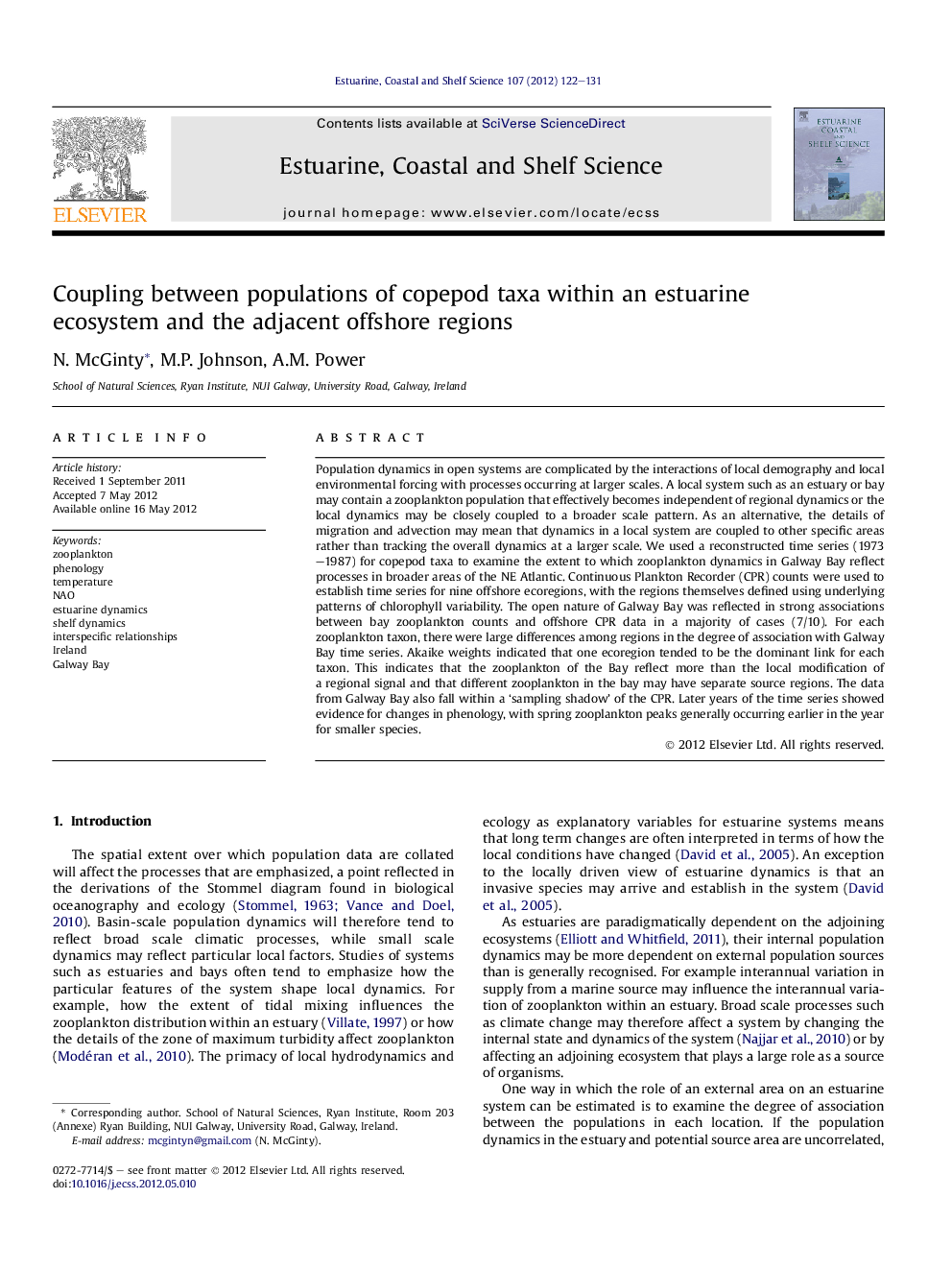| Article ID | Journal | Published Year | Pages | File Type |
|---|---|---|---|---|
| 4540227 | Estuarine, Coastal and Shelf Science | 2012 | 10 Pages |
Population dynamics in open systems are complicated by the interactions of local demography and local environmental forcing with processes occurring at larger scales. A local system such as an estuary or bay may contain a zooplankton population that effectively becomes independent of regional dynamics or the local dynamics may be closely coupled to a broader scale pattern. As an alternative, the details of migration and advection may mean that dynamics in a local system are coupled to other specific areas rather than tracking the overall dynamics at a larger scale. We used a reconstructed time series (1973–1987) for copepod taxa to examine the extent to which zooplankton dynamics in Galway Bay reflect processes in broader areas of the NE Atlantic. Continuous Plankton Recorder (CPR) counts were used to establish time series for nine offshore ecoregions, with the regions themselves defined using underlying patterns of chlorophyll variability. The open nature of Galway Bay was reflected in strong associations between bay zooplankton counts and offshore CPR data in a majority of cases (7/10). For each zooplankton taxon, there were large differences among regions in the degree of association with Galway Bay time series. Akaike weights indicated that one ecoregion tended to be the dominant link for each taxon. This indicates that the zooplankton of the Bay reflect more than the local modification of a regional signal and that different zooplankton in the bay may have separate source regions. The data from Galway Bay also fall within a ‘sampling shadow’ of the CPR. Later years of the time series showed evidence for changes in phenology, with spring zooplankton peaks generally occurring earlier in the year for smaller species.
